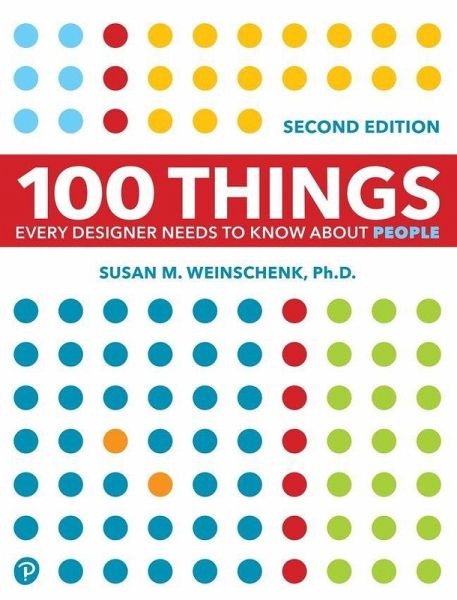
100 Things Every Designer Needs to Know About People
Versandkostenfrei!
Versandfertig in 2-4 Wochen
38,99 €
inkl. MwSt.
Weitere Ausgaben:

PAYBACK Punkte
19 °P sammeln!
In 100 Things Every Designer Needs to Know About People, 2nd Edition, Dr. Susan Weinschenk shows design and web professionals how to apply the latest research in cognitive, perceptual, and social psychology to create more effective web sites and apps. Dr. Weinschenk offers concise, plain-English insights and practical examples for designing sites and apps that are more intuitive and engaging, because they match the way humans think, work, and play. Updated to reflect the latest scientific findings, this full-color, relentlessly practical guide will help you whether your background is in visual...
In 100 Things Every Designer Needs to Know About People, 2nd Edition, Dr. Susan Weinschenk shows design and web professionals how to apply the latest research in cognitive, perceptual, and social psychology to create more effective web sites and apps. Dr. Weinschenk offers concise, plain-English insights and practical examples for designing sites and apps that are more intuitive and engaging, because they match the way humans think, work, and play. Updated to reflect the latest scientific findings, this full-color, relentlessly practical guide will help you whether your background is in visual design, interaction design, programming, or anything else. Weinschenk will help you improve the many design choices you make every single day — from choosing fonts and chunking information to motivating people and guiding them towards purchase. Not just another "web design guidelines” book, 100 Things Every Designer Needs to Know About People, 2nd Edition explains the why behind the guidelines, and exposes the many web design myths and "urban legends” that stand in your way. Dr. Weinschenk shows you what makes humans tick, and helps you translate that knowledge into exceptionally successful designs.
Dieser Artikel kann nur an eine deutsche Lieferadresse ausgeliefert werden.



